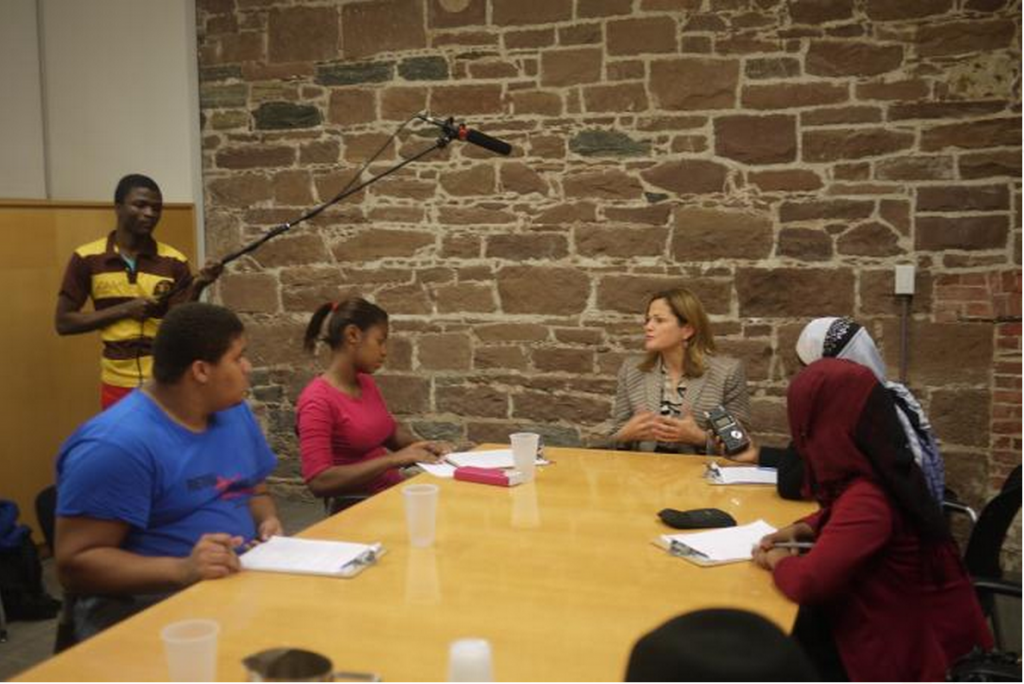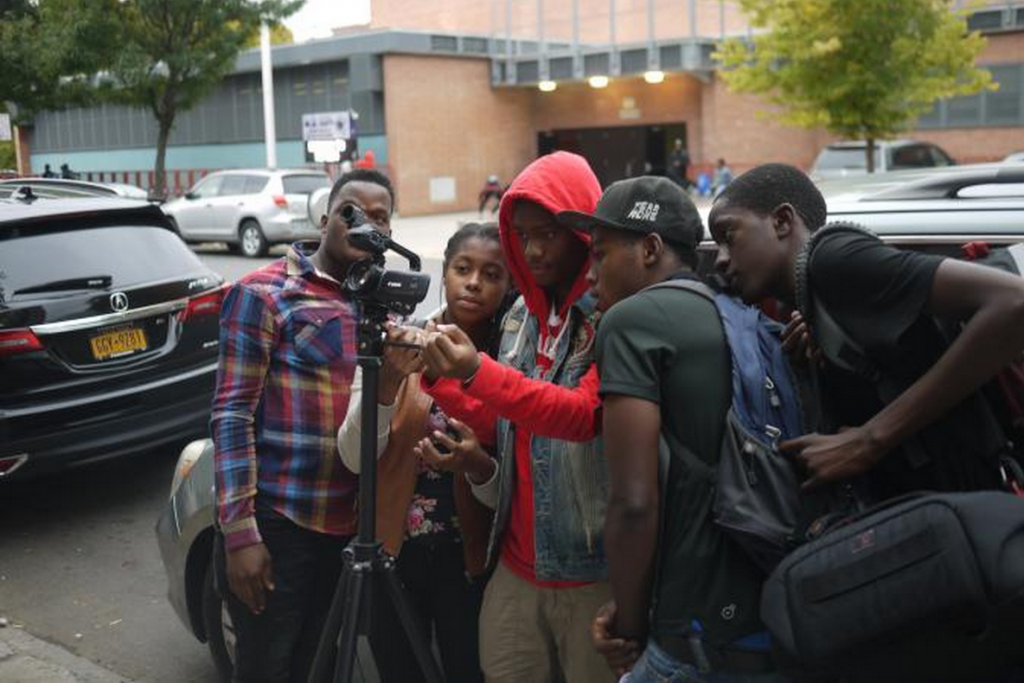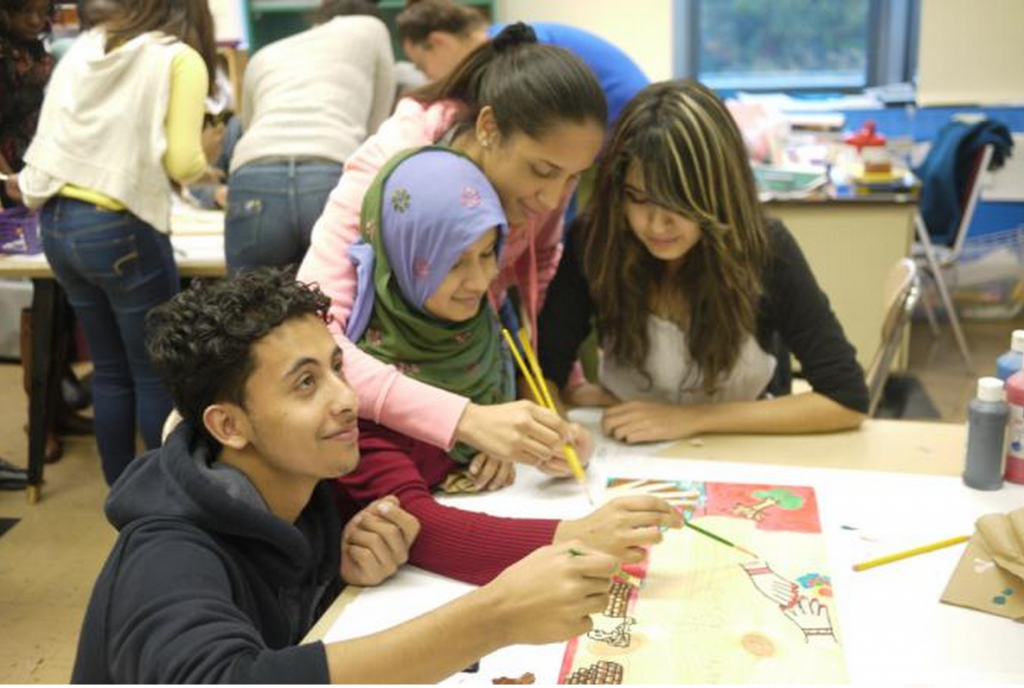AWESOME PROJECT: Bronx high schoolers investigate the mysteries of transit pricing
Published July 30, 2015
Hey, subway rider. Notice your monthly MTA pass lightening your wallet more and more each year? Got any questions about who sets public transit prices? How’d you like the chance to interview Assemblymember James Brennan (Park Slope, Windsor Terrace, Flatbush, Midwood and Kensington) on public transit issues, and get to ask him your most pressing questions about who determines the cost of a trip uptown on the A train? YEAH YOU WOULD.

It’s all in a day’s work this summer, for a group of 15 lucky students from five Bronx high schools. They’re taking part in a program run by the Center for Urban Pedagogy, or CUP. In collaboration with Christina Houle, a teaching artist with a background in the visual arts, in video, and in higher education, the students are doing investigative work into the question: “Who decides on the cost of subway fare?” They’re learning not just about our great city’s public transit system, but also about leadership, about personal empowerment, about discovering one’s voice and being heard in the public sphere. It’s about not just getting answers, but also learning how to put oneself in the position to shape answers. And that, believe the CUP staff, will make all the difference.
“At the end of the project,” says CUP Director of Development and Communications Frampton Tolbert, “they come away with a much different understanding of how their neighborhood works, and if they do want to get involved, they know where to do that.”

CUP is a nonprofit organization that harnesses the power of art and design to engage, among others, high schoolers from low-income backgrounds in meaningful civic engagement. To see an example of the kind of investigative work CUP students do, check out this video on local NYC government: Who Rules?
The goal? To show these students that they have the power to decode the world around them, and to get answers to their questions about what makes New York City go. To show them that the city they call home is not run by unimpeachable orders that fall from the sky, but by people – people who they, and anyone who wants to, can have contact with at some level. To show them, in other words, that they can be active citizens, and can shape their environment.
“This is really about empowering young people to feel that they have a voice in the community,” says CUP Youth Education Program Director Christy Herbes, “to help them understand these invisible structures around them, so that they’re really tangible. Give them a really clear pathway to how they can become involved. I think it helps them learn to ask critical questions and process structures that are really complicated.”
Here are just a few of the questions that past CUP students have tackled:
- How does City Council work?
- How do community boards work?
- Who decides where to put supermarkets?
- Where does the food in our bodegas come from?
- Who decides where homeless shelters go?
- Who owns the internet?

THE PROCESS
Students prepare heavily for the formal interviews they conduct, and debrief as a group afterwards. What went well? What didn’t? With the assistance of their artist teacher, they then produce a culminating product in the form of an educational video. But the project doesn’t end there – the video will be used as an educational tool in high schools and in the public. “That goes out into the public and gets promoted to communities that are working on that issue,” says Tolbert, “and so it’s not just that they created this really great video and had fun doing it, but they’re like ‘I’m able to teach people what I know.’ And I think that’s really powerful.”
WHO DOES DECIDE HOW MUCH TO CHARGE FOR NYC TRANSIT?
So, back to the question at hand for this summer’s CUP students. To answer their question, they interviewed not just James Brennan, but also:
- Veronica Vanterpool, Executive Director of the Tri-State Transportation Campaign. Vanterpool herself is from the Bronx, and the students loved connecting with her while learning about how advocacy organizations work.
- Adam Lisberg of the MTA, whose glassy, corporate-feeling Manhattan office had impressive views and offered students a whole different view of the issue.
- Nancy Rankin – VP for Policy, Research and Advocacy with the Community Service Society, who talked with the students about how low-income workers are disproportionately impacted by public transit fare hikes.

STAY IN TOUCH FOR THEIR FINDINGS
Want to find out what the students learned about our transit pricing? With Houle, they’ll be making a fun educational video on the issue, so check CUP’s website over the next month or so to get details on the video’s September launch event. CUP is currently scouting theaters and other venues at the moment. Who knows, your Assemblymember might even be there!
And to donate, check out CUP’s ioby campaign page here. They still need to raise about $5,000 to wrap up the project and video.
If CUP’s work inspires you to take action in YOUR neighborhood, or if you have awesome ideas about how to make your neighborhood greener, safer, and more fun, let us help! Tell us your awesome idea right here. We’d love to help you get started today.
Pssst…. In OTHER ioby news: LA GREAT STREETS CHALLENGE winners JUST announced! Think LA’s streets are for cars only? Think again. In partnership with the city of LA, we’re supporting 8 fabulous projects designed to revitalize some of the city’s greatest streets and boulevards.
